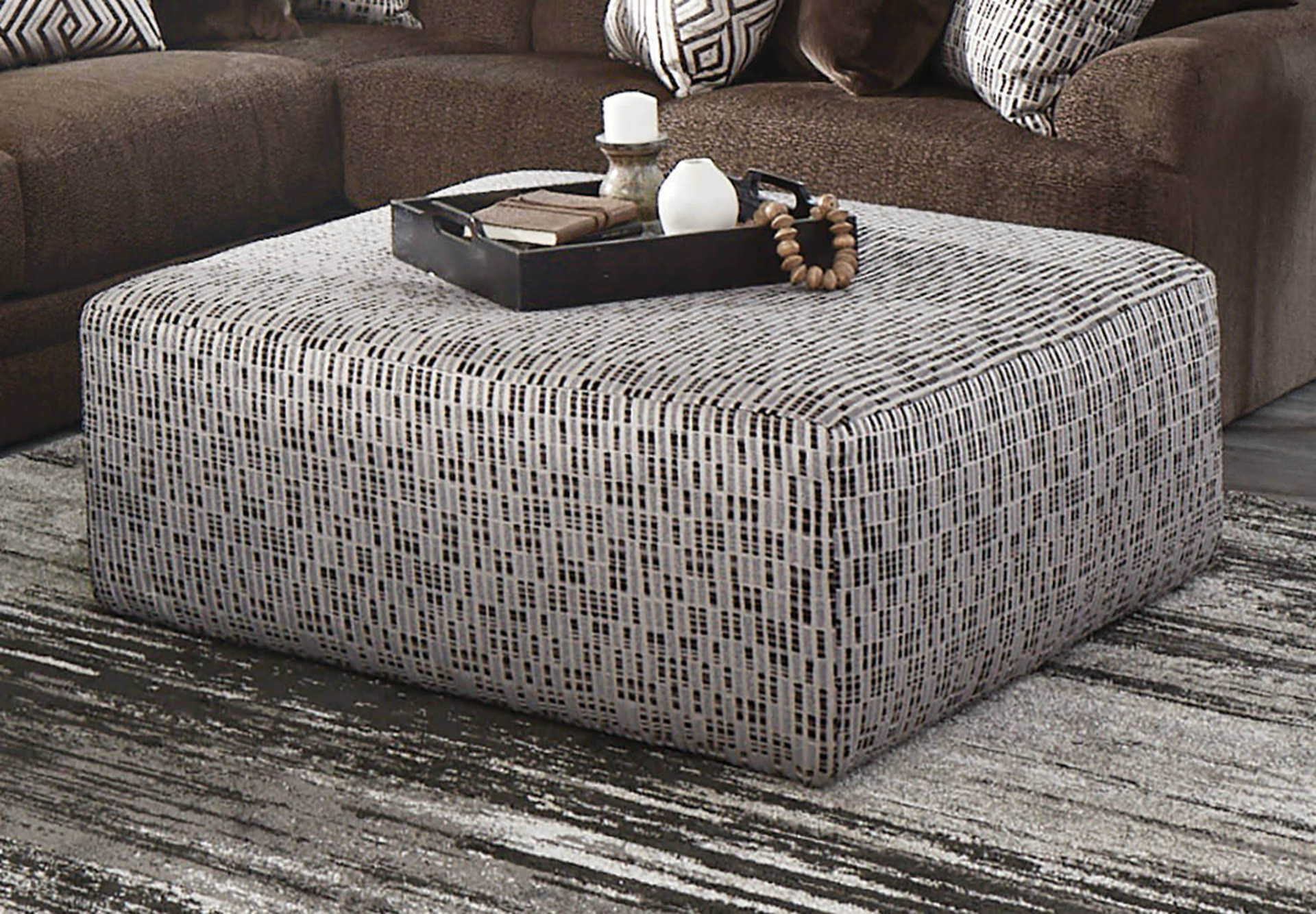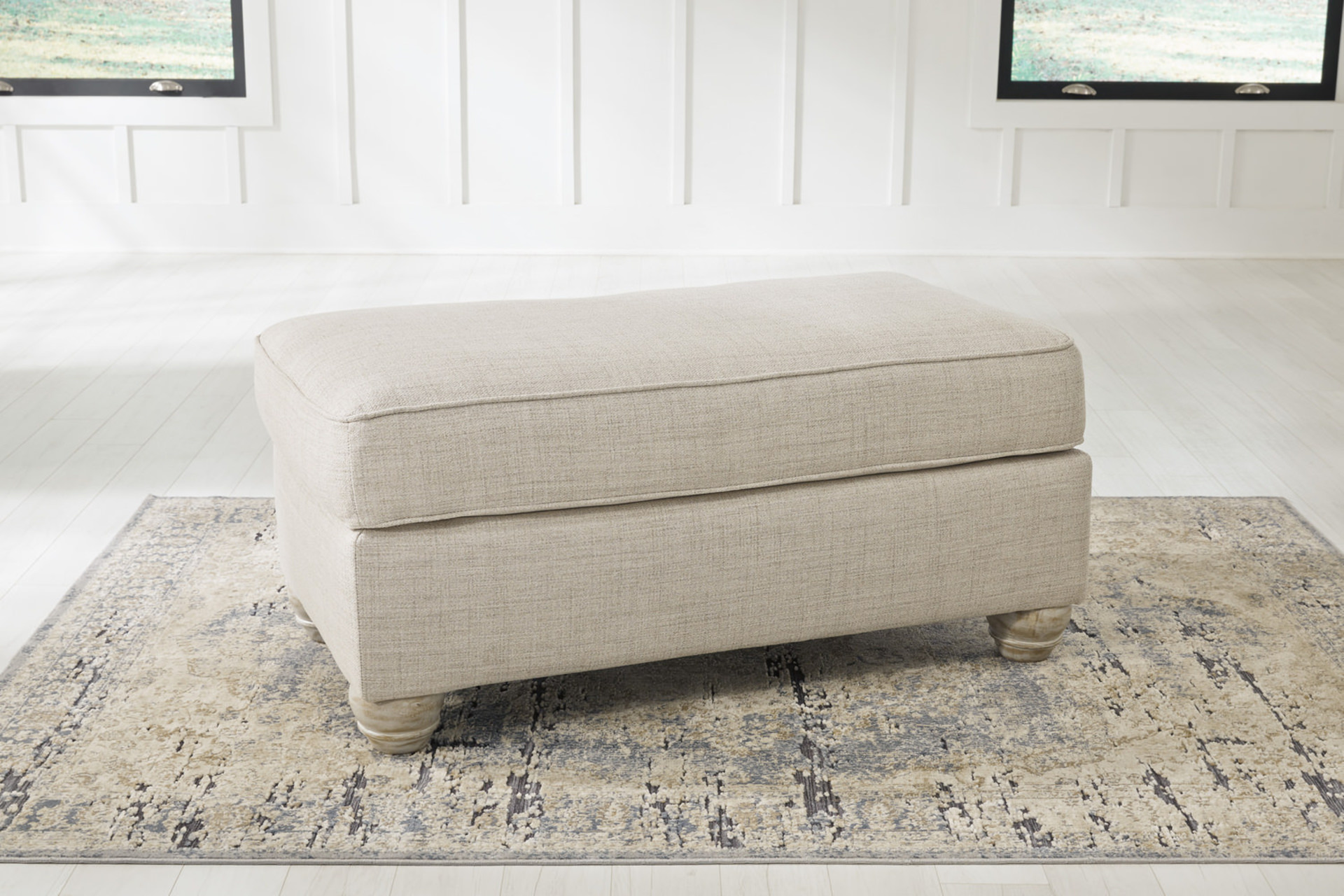Ottoman Buying Guide

One of life’s genuine pleasures is sitting back in your sofa or armchair and relaxing your feet on an ottoman. However, if you’re thinking that an ottoman is only a footrest, you’re missing out on the dynamic versatility of this amazing piece of furniture. When you choose an ottoman, think about all the ways you can use it.
What Is an Ottoman?
Simply put, an ottoman is a low upholstered seat without any back or arms. It’s low enough to serve as a footrest but high enough for a person to sit on. It may or may not have a hinged top that opens up for storage. Some people might define an ottoman as a footstool, and it is, but ottomans are far more than just footstools. An ottoman is an enhancement to your furniture arrangement, a possible site for storage and one of the most versatile items in your home.
Why an Ottoman?
One excellent reason to own an ottoman: to relax on your cushiest sofa with a good book and your favorite cat on your lap. However, that’s far from the only thing it can do. With some ottomans, that comfy stool you’re resting your feet on is a storage place for extra books, crafting materials or anything you don’t want cluttering your room. It’s also furniture you can use with a tray as a coffee table or other accent table alternative.
If a few guests stop by, especially the younger variety, you can clear the ottoman and use it as an occasional chair. You can sit on it yourself when you put your shoes on or arrange the lower shelves of a bookcase.
Ottomans are lightweight, and they’re easy to move about. Furthermore, they aren’t just for the living room. In a family room, they’re not only a footrest but great for children to sit on and store their games and puzzles in. If you haven’t considered an ottoman for your bedroom, maybe you should. It can be a bedside table, a storage unit for linens or an alternative to the bed as a place to sit. You can even use an ottoman as an unexpected accent piece in a hallway.
In addition to all its practical purposes, you might choose an ottoman simply because it looks great. It can complement your seating arrangement or stand out as a contrasting piece that adds character to the room.

Types of Ottomans
Some ottomans are general purpose, ready to serve as a footrest or a chair. Others, however, are specifically designed to be adept at the various tasks that ottomans can accomplish.
· Storage ottoman. Most of these are square or rectangular with a lid that is either hinged or lifts completely off. They’re happy to store loose papers, extra throws, games and spare clothing. Some have multiple compartments for keeping smaller items in order. In a family room, they can serve as the children’s toy box; it’s easy to gather up the playthings and toss them in. If you have lots of shoes that tend to get scattered, an ottoman with storage keeps them out of the way. An attractive storage ottoman will draw compliments for it looks on the outside, and you guests don’t need to know what’s on the inside.
· Coffee table ottoman. You can set objects on any ottoman, but an ottoman coffee table is made for it. The top is flat, there aren’t any buttons or tufting to get in the way. Set a tray on it, and you have a spot stable enough for a coffee service. You can also use one in the family room for the kids (and grown-ups) to play games on. If the young ones start running around, you don’t have to worry about sharp corners like wooden tables have. Depending on how and where it’s used, this piece is also called a cocktail ottoman. Some even have reversible tops with upholstery on one side and conveniently flat wood on the other.
· Glider ottoman. This is the ultimate amenity for a glider or a rocking chair. It’s a footrest that moves right along with you as you go back and forth. Many of these are square, and they fit right in anywhere a rocker does.
· Outdoor ottoman. Why should the patio get left out? People sometimes want to prop their feet up when they’re sitting outside. These can serve at storage units and coffee tables just like their indoor equivalents. Outdoor ottomans are often wicker with tops covered by water-resistant fabric.
Choosing an Ottoman
An ottoman needs to look good and serve you well; and the size, shape and materials all play into that.

Sizing It Up
The ottoman is an addition to the room’s furniture arrangement, not the center of it. It shouldn’t be so big that it dwarfs the other items, nor so small that it escapes notice. A coffee table ottoman in front of a sofa should be half the length of the sofa or a little more. A storage ottoman or one used as a footstool might be smaller.
Getting into Shape
Consider the other pieces in the room when you choose the shape of your ottoman. Often that will mean a square or rectangular ottoman with straight-lined furniture and a rounded one with rounded pieces. However, that doesn’t have to be the case. A rounded ottoman can soften harder lines and even provide a bit of playfulness.
· Rectangular ottomans are perhaps the most common shape. It’s an excellent choice for an ottoman that sits in front of a sofa and will be used as a coffee table. These provide plenty of room for trays full of snacks and beverages. You can play cards on them or spread out the pieces of a board game. These also make a comfortable extra seat in a living room, bedroom or rec room. Rectangular storage ottomans offer ample space for everything from books to blankets.
· Square ottomans make fine footrests, especially smaller units paired with an accent chair. They also move about easily, and you can push several together to customize your arrangement. This clustering creates a whimsical configuration that adds interest to the space. Larger square ottomans work well in the middle of a group of sofas, sectionals and chairs, where everyone can reach the top surface.
· Rounded Ottomans, either circular or oval, often bring a nice change of pace to a room. While they echo sofas and chairs with round lines, they can also add a touch of relaxation to an area where most furnishings have angles. Rounded ottomans push a room toward a modern or contemporary look, and are useful in a transitional scheme. These units don’t have to be circular; there are also unexpected shapes such as triangles and polygons with rounded corners.
Color
Sofas and chairs often come with matching ottomans. In addition, many people choose ottomans the same color as the principal furnishings. You’ll never go wrong with an ottoman that matches, but a contrasting ottoman often carries a bit of “pop” and enlivens a room. You can even choose a patterned ottoman of one or several colors.
In choosing the color of your ottoman, consider the 60/30/10 rule, which suggests that 60 percent of a space, including floors and walls, should be in one main color, 30 percent in a complementary or contrasting color and 10 percent in an accent color. While ottomans are frequently part of the 60, you might consider including them in the 30 percent or even the 10.
Ottoman Materials
An ottoman consists of a frame and a cushioned top. The legs are usually wooden and may or may not be visible. Sometimes you can see a wooden base directly under the upholstered top. In some cases, the frame is made of metal. In an outdoor ottoman, the frame is often wicker.
There’s nothing quite as refined and classic as a leather ottoman. Leather is durable and easy to clean, and it’s practical for units that get some rough use. Fabric ottomans, on the other hand, yield a greater choice of colors and patterns and can imply a more casual appearance. That’s often a better ambiance in a family room.
A Reflection of Your Style
An ottoman should extend the aesthetic of your room or possibly take it in a new direction. It also needs to suit the usage it’s going to get. For example, a tufted ottoman adds another point of sophistication to an elegant room, but it’s impractical if you plan to use it as a coffee table.
Ottomans come in every style from traditional to transitional to modern to casual. Choose one that reflects your personality and the personality you’ve already lent to the room. Do you want your ottoman to blend in or stand out? Neither choice is incorrect. A matching ottoman reinforces what’s already there, while a contrasting one might take the room in a new direction.
Ottoman Decor
A coffee table ottoman looks just fine with a bare top, waiting for someone to deal the cards or to set a tray atop it for coffee and snacks. However, if it’s used mainly as a table, there’s no reason you can’t keep it always topped with decor. One of the best ways to do that is with a tray made of anything from metal to wood to wicker. You can then dress up the tray with figurines, candlesticks, vases and other decor. Or you can place a few small bowls directly on the top surface and maybe fill some with rounded bits of glass. You can even adopt the old standard practice of setting a coffee table book or two on your ottoman.
Why Stop at Just One?
Ottomans can be formal or casual as well as decorative yet practical. Consider all the available shapes, colors and patterns. Think about how ottomans can be footrests or chairs, tables or storage units. An ottoman or two can add style and convenience to rooms throughout the home.